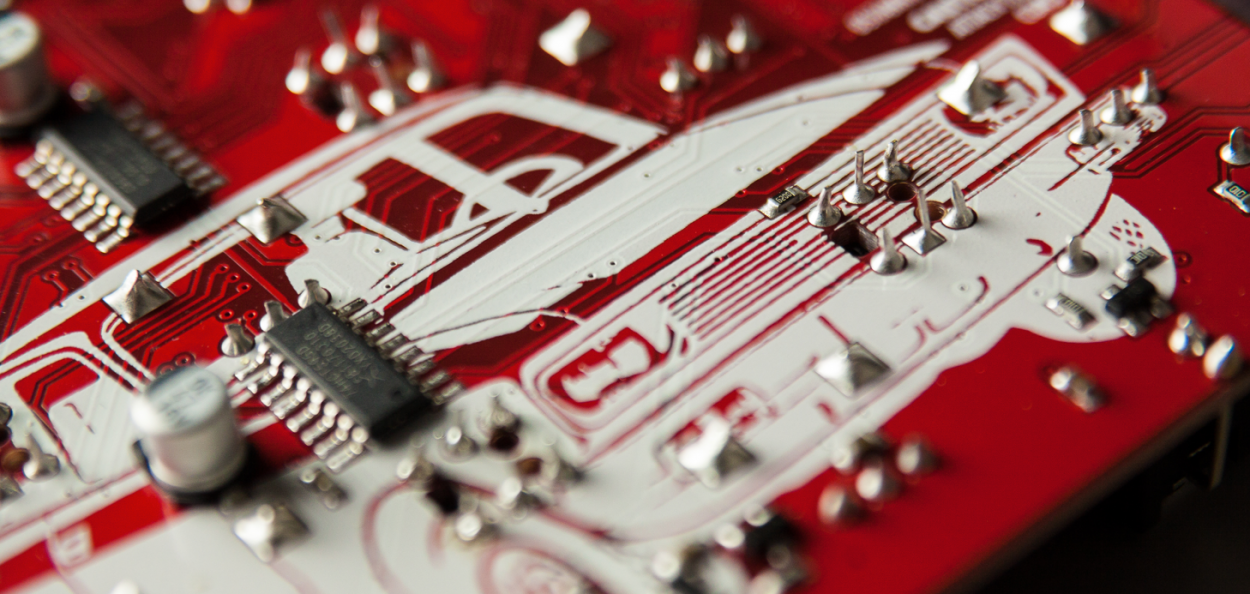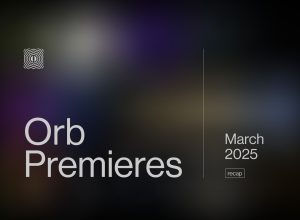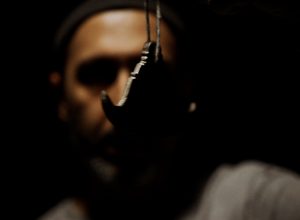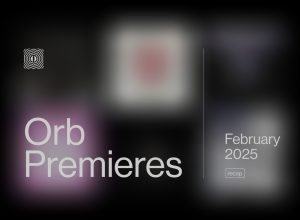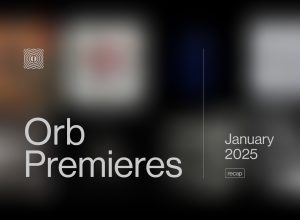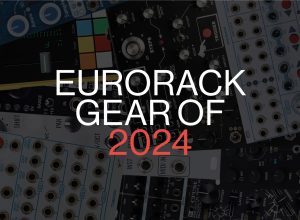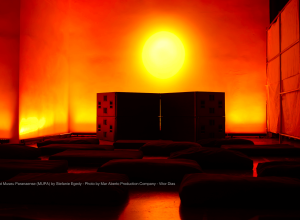Xaoc Devices (written in the Cyrillic alphabet, and pronounced roughly as “chaos”) is a small modular synthesizer company based in the suburbs of Warsaw, Poland. Founded in 2011, the shop has established itself as one of the most consistently innovative in the Eurorack format. In an ecosystem that’s increasingly crowded and challenging to navigate, Xaoc Devices has maintained a coherent vision that combines experimentalism with a consistent dedication to wide-ranging functionality and utility.
In Zadar and Batumi, for instance, Xaoc Devices has developed two of the most beloved function generators in the Eurorack format. Each provides four outputs of modulation (loopable envelopes in the case of Zadar, and dynamic LFOs in the case of Batumi), squeezed into a compact 10 HP. In the case of both, these modulation sources can be chained together in unique and creative ways. Others, like their analog BBD delay module Sarajewo, additive oscillator Odessa, and multimode filter Belgrad have also inspired devoted followings, providing distinctive and thoughtful combinations of functionality and texture not found elsewhere.
Aesthetics are not given short shrift by Xaoc Devices, either; with a strong emphasis on graphic and UX design, its modules are as appealing to the eye as they are to the ear. With backgrounds in architecture and graphic design, respectively, founders Marcin and Tomek, have infused their front panels with a fantastic attention to detail and usability. Distinctive combinations of subtle details like chronograph-style diagrams, set around classic Davies knobs and module names drawn from cities from the Eastern Bloc, inform an aesthetic that makes Xaoc Devices modules instantly recognizable. When a module has a screen there’s great effort put into the UI to avoid the need for menu-diving. Likewise, the placement of every knob and jack on a Xaoc module is quite clearly obsessively fretted over.
We spoke to Xaoc Devices about the studio’s roots, design philosophies, and even its latest modules: the Moskwa II sequencer (with its Ostankino II expander), and the Timiszoara multi-effects module.
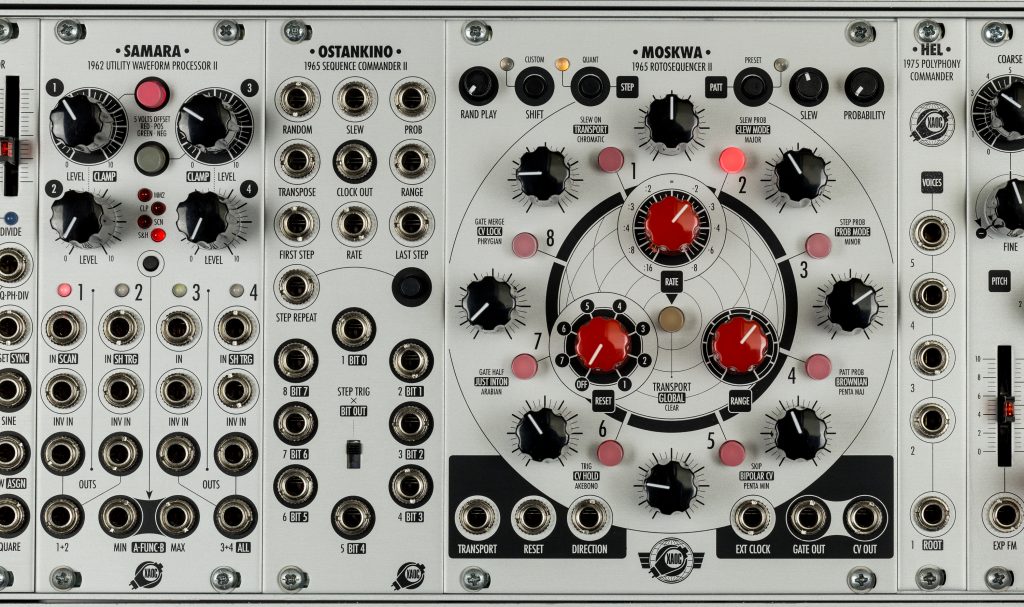
First off: How are you guys doing, and how have you been managing over the past crazy year? How has it been recently, particularly in terms of building modules in the workshop?
We’re doing fine, thanks for asking. The times are surely crazy. Fortunately for us, the demand for modules has been steady. Most of the time we struggle to keep up with orders for our most successful modules. Barring a short period of time during the first wave of lockdowns, we didn’t have to stop production, even though it is going at a marginally slower pace than usual. The remote work paradigm did not stop the development, though—quite the opposite. It gave us time to catch up on the backlog of new projects. Also, working in a small and friendly team in the Warsaw suburbs made things easier for us and we have managed to reorganize our work in such a way that the pandemic has not really disturbed our activities. Fingers crossed it stays that way.
How do you guys decide when a module should use an analog vs. digital core? For instance, LFOs and envelopes are most typically designed as analog function generators (unlike Zadar and Batumi), while delay modules seem to be increasingly digital (unlike Sarajewo). How did you land on these technical designs?
We don’t really treat digital and analog separately, but rather try and combine them to explore their strengths. We choose the platform which best suits the task. We won’t use digital if we want analog character, just as we won’t use analog if we want high predictability, or 100% stability. We appreciate the digital precision offered by Odessa, but at the same time, we love that analog grit—e.g. Belgrad’s unmistakable sonic properties. Obviously, it’s not only about the sound, e.g. digital gives us access to features that are very difficult to obtain in the analog realm.
Digital envelopes and LFOs are nothing new, but there are some things to avoid. The ability to obtain envelopes very long and snappy at the same time, and shapes as unusual as those offered by Zadar convinced us to go the digital route. These things would be very difficult, if not impossible, to achieve with analog technology. On the other hand, it would be much easier to design a digital delay module than to wrestle with finicky BBD chips, but we’ve decided to go with the old tech because of its unique recognizable character which is difficult to accurately emulate using digital processing.
Even though the audio path in Sarajewo is completely analog, we are using microchips for digital control of the clock to give the users convenient functions such as tap tempo. We are using an old technology (i.e. BBD) to explore its sonic properties, but we are still incorporating new technology both in the analog and the digital domain to broaden the scope of functionality or sound fidelity. Digital allows us to achieve certain tasks much easier and more efficiently than analog. So again—we try to fuse these two worlds together for a better and more reliable product. All possible solutions are interesting for us, be it old or new, without relying on the analog/digital distinction, e.g. modern FPGA chips and old-school 8-bit digital processing. The same applies to the analog realm which—it might surprise some—does not stand still and constantly evolves.
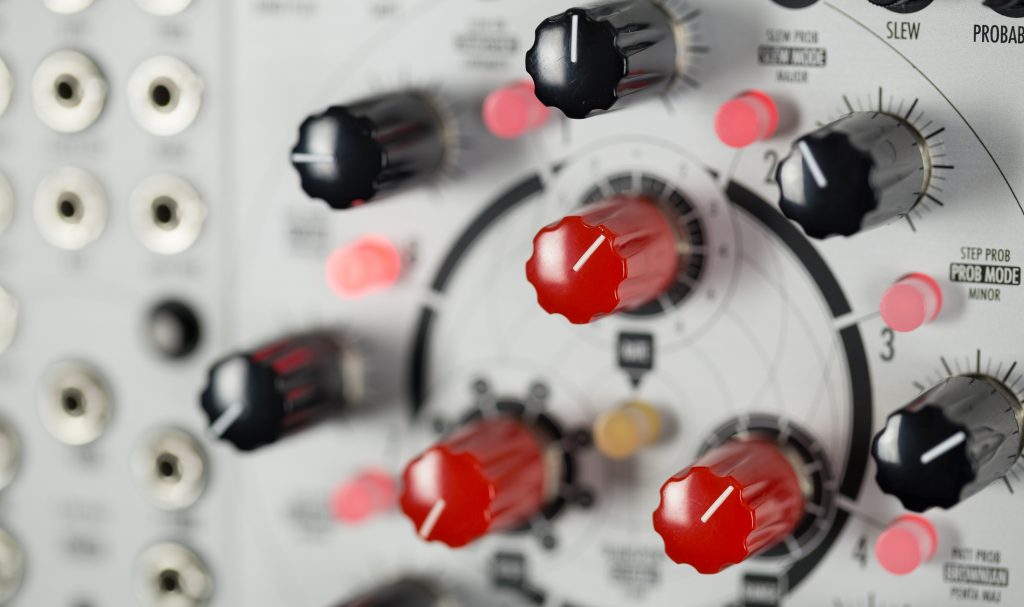
There’s something very interesting about Zadar, in that it’s a digital module that “feels” very analog. You call this out in the documentation, comparing its design to that of vector graphics, but I’m wondering if you could explain this in a bit more detail? Are you using a different CPU or type of DSP than one would typically see in this type of module? Was achieving this sort of “vector art” quality to the modulation the foundation for the original design?
One of the aspects of the analog feel you mention is certainly the intuitive interface we’ve decided to adopt. Granted, there is a menu (unavoidable to keep the compact size of 10HP), but we think we have successfully managed to make it very user-friendly and easy to navigate.
The main premise was to design an easy-to-use envelope offering shapes unobtainable in the analog realm (or obtainable, but in a very HP-intensive way). We like complex multi-stage envelopes. Unfortunately, the multitude of parameters you have to set in order to obtain such shapes is a real flow killer. Also, the more parameters there are, the more HP you need. Hence the idea for predefined shapes, but with the ability to bend them and distort like Bézier curves in graphic design, which is only possible in the digital domain.
The hardware we use isn’t special at all. What matters the most are the constantly evolving ideas that swerve and shift during the development process as a direct result of employing a diverse development team which includes engineers, designers, and performing artists. Therefore, we can use building blocks from various fields to employ commonly used processes to do uncommon tasks (e.g. taking Bézier curves directly from graphic design and warping them by using the bilinear transform commonly used during the design of digital filters), and then investigate whether such an idea is useful from a musical point of view.
This organic/flexible quality is very noticeable when using Zadar in a video synthesis workflow, which typically requires analog-levels of precision/granularity or the use of high-spec FPGAs in order to sync frequencies with multiples of the framerate. Were you guys aware while developing the module that it would become such a great fit for video synthesis?
We certainly did not design the module with video synthesis in mind. It was only after the module had been ready that it occurred to us that Zadar was perfectly suitable for the LZX video synthesis system. For example, it incorporates flexible attenuation of the output level, which makes it directly compatible with the LZX +-/1V CV levels—no need for external voltage scaling. Zadar is also quite useful as a video oscillator, even though perfect sync might be a bit tricky. Zadar is not the only Xaoc Devices module handy in video synthesis though—you should try the Kamieniec phaser in a vector synthesis style environment!
You mentioned that the analog realm “doesn’t stand still and is constantly evolving,” which might be surprising to some people. What are some of the areas in which this evolution of analog capabilities and processes has been most relevant to what you guys are doing? What have been some of the most compelling analog developments or breakthroughs in the last handful of years?
For us, the most important aspect of the progress is the increased component stability (e.g. new low noise op-amps), which makes certain applications feasible. Also, in recent years, we’ve been observing a revival of old chips that have suddenly been back in production thanks not only to the increased demand caused by nostalgia for “the good old times,” but most importantly by modern production processes. That increased stability of new components and availability of old components back in production combined with digital control results in a much-expanded range of possibilities.
Another aspect of that new old tech manifests itself by reaching further back in time. For example—there never were that many tube synthesizers, as these instruments had only started to appear in the transistor era. In the past, tubes had been used out of necessity because there had been no alternative, and as soon as transistors became available tubes got ditched (barring the guitar amp market). Now we use tubes for their sonic characteristics, e.g. in filters (especially in the Eurorack world). New manufacturing methods have enabled us (i.e. the synth makers) to find new contexts for the old tech. We are free to go back and take vintage/historic tech-like tubes, and use them because of their inherent properties—rather than because nothing else is available for that task. We haven’t used tubes in our products yet, but we’re very much tempted to do so in the future.
Zadar using Bézier curves and warping them strikes me as a very good example of your background in graphic design merging with Xaoc Devices’s work in the world of audio, and being willing to experiment with ideas from different arts and sciences. Have there been other instances like this, where a concept is so successfully transposed from another realm?
We consider the whole idea of a modular synth to be that of enabling surprising pairings, often using modules/components against their intended purpose, such as treating a looping envelope as an oscillator. Zadar is one example of such a way of thinking with us encouraging the users to experiment as well as enabling them to achieve new shapes in an unorthodox manner. Even though Zadar is at its core an envelope generator, it is based on the same premise as the wavetable synthesis usually employed for sound generation.
A perfect example of a product that gives the users something to think about by giving them access to the (for the lack of a better word) “guts” of the module/processing is our Leibniz Subsystem. We started out with the realization that the 8-bit processing utilizes eight chains of triggers. We wanted to use these triggers in new contexts, to give the whole idea new meanings and new applications. A modular synth is a perfect environment for such experimentation. We’ve taken 8-bit processing of analog signals and exposed its inner workings, letting the user mess with every smallest step of the processing: AD conversion, clock, DA conversion, bit flipping, bit replacement, etc. We encourage the user to explore these functions for purposes very different from the tasks they were intended to perform. We’re still adding to the system, so expect new modules compatible with the Leibniz Subsystem shortly.
I know you guys have a strong design background, and in general, seem very specific about your parts and materials choices. Have you started to see any particular technological or manufacturing (or ecological) trends in the last few years that you’re excited to integrate into your module designs, and/or manufacturing process?
For many reasons, the Eurorack format isn’t the most flexible as far as design is concerned. We are restricted not only by the Eurorack specific physical characteristics, the technology, and the aesthetic but also by the users’ expectations and habits. Because we operate on a small scale, we’re not exactly spoiled for choice with regards to custom components. Graphic design is where we are free to express our ideas and experiment.
Over recent years with the growth of the Eurorack scene, we’ve seen a few unwritten rules develop—rules one has got to obey to stay afloat in this business. One of them is the necessary compactness of the modules as every HP counts. Fitting so many features into a module as narrow as possible, with all the ergonomic and usability requirements—but retaining a look that is aesthetically pleasing—constitutes a huge challenge for the designer.
Even such a trivial matter as menu structure in modules that require a screen can be a major obstacle. For instance, we’re used to working with computers, and the computer interface seems logical to us. Therefore, many people would expect to see it reflected in Eurorack modules that use screens. But do you really expect it to work when all the screen real estate you have at your disposal is the area equivalent of a postage stamp, and instead of a mouse you have one encoder? Unorthodox measures are needed to negotiate such contradictory needs and expectations.
We all have our favorite ways of interacting with hardware, and we don’t necessarily want to learn a new paradigm with each new module/synth. Many times it seems like a matter of trying to make the experience of using menus as painless as possible to give the users something they don’t want, but with the plethora of features, we are sure they need. It’s not only about the menus either. Even the smallest change can make or break a module from the usability point of view. Move one socket to the left or to the right, and it can change the whole user experience.
As far as manufacturing is concerned, we’re investigating the use of 3D printing—not only at the prototyping stage but also to create small parts we use behind the panel. We hope that in the near future the quality of 3D prints improves enough for us to be able to use such components where they are visible for the user.
We’re approaching production numbers that make considering custom parts a reality. It is all very exciting for us, although we are limited by the aesthetic choices we’ve already made. We try to pay attention to the smallest of things, e.g. packaging. We would like it to be as eco-conscious as possible, so we consider adjustments that would allow us to get rid of the plastic anti-static bubble wrap bags that are omnipresent in the Euroland.
You mentioned a while back that you didn’t particularly like the idea of self-contained modules/synths but along the lines of the Karl Marx Stadt, have you explored doing any more sort of complete voice semi-modular designs?
Nothing has changed. For us, the most important and interesting thing about the modular synth is its basic premise, i.e. the ability to connect different modules by various manufacturers in the order of one’s choice. We’re definitely not interested in making any regular subtractive synth voice modules. We understand a small footprint voice may come in handy in reduced portable systems, but it goes against the basic idea of a modular synth. We believe that fixed architecture hinders creativity, especially in such a flexible and experiment-inducing environment as a modular synthesizer.
We are considering standalone devices though, but these would have to be something original, something off the wall. We’re not there yet.
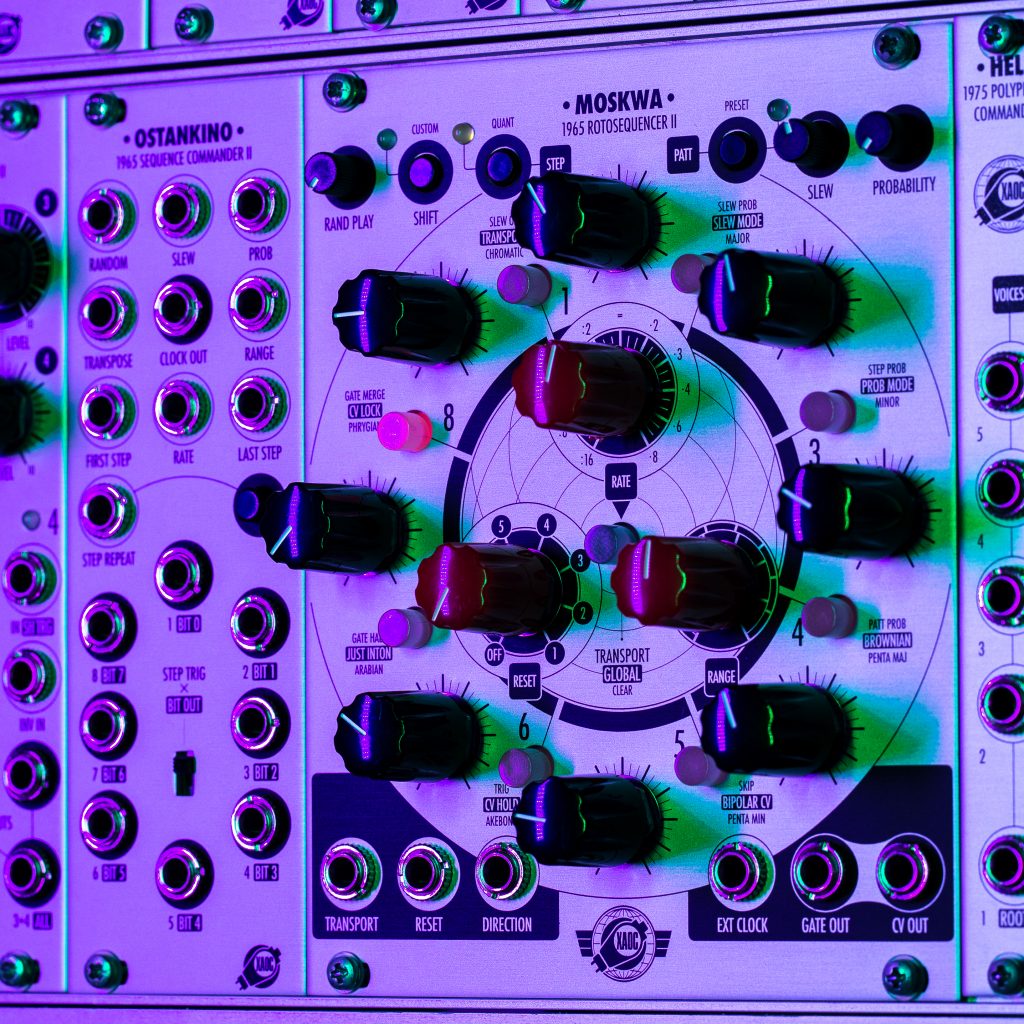
How many of you are working at Xaoc Devices now? Does it feel like you would like to remain this size, or is there an intention to grow bigger as a company?
Currently, we employ ten people. Even though at times we do feel a bit short-staffed when the orders keep piling up, we consider that number to be perfect for such a small operation like ours. We don’t really want to expand much further, because increasing the number of employees would disrupt the delicate balance between Xaoc Devices being a work environment and it being a group of friends. It would mean a less friendly atmosphere, and more manageable tasks that would make the whole company feel more… like a company—instead of a collective, which we consider Xaoc Devices to be.
The only problem of such a small operation is our dependency on the component availability. We suffer from the instability of deliveries, especially in the current pandemic situation. As a small company, we’re unable to stock up on parts to be immune to market fluctuations. Parts shortages or delivery delays result in delays in product development and production. Over the years, we’ve learned to prepare for the worst, but sometimes even that is not enough. We always have quite a few projects in development simultaneously, at various stages of completion, so we always manage, but it would be nice to have a project go smoothly from conception to production for a change.
Then there are times when parts do not act up to specs, and we have to make some changes to the design when the product’s already on the market (i.e. manufacturing the next batch with different components), but we try and limit the number of such situations by careful and diligent testing. Then there’s the matter of standardization, or rather lack of thereof, in the Eurorack world. The openness of modular synths is an advantage and a drawback at the same time. Too many different bus boards, too many different power supplies, too many different modules with different specs and requirements. We all know the stories of one particular module not being thrilled to share the bus board with some other module, or a particular kind or even make of a PSU. This makes our job much more difficult (as a module manufacturer, it applies to all our colleagues in that field).
The aesthetics of Xaoc Devices modules borrow quite a bit from class, state, and technology references from the Eastern Bloc. You incorporate many small details, like the circular, military chronograph-style number diagrams around knobs. It seems like a great source of inspiration and sort of historical excavation—I’m wondering also how this legacy of Eastern European industrial craftsmanship resonates “materially” as well?
There’s no rich synth-building tradition in Poland. There were quite a few synthesizers made in the USSR, but more often than not their uniqueness was due to the component shortage and insufficient knowledge of the designers and not to the builders’ ingenuity. But there is no denying that there are some nice Soviet synths from that era. In Poland we didn’t have even that—the only electronic instruments readily available were organs, a few primitive drum machines, and some DIY synths. The DIY scene in Poland wasn’t as vibrant as in the West, because the access to parts was very limited, but more importantly, any “real” synths that one could use as a starting point or learn on were very rare and expensive. People were kind of forced to go the DIY route, but the lack of parts meant the resulting devices were often of low quality.
As far as design is concerned, you know it’s vital for us. The retro aesthetic inspires us, but the reality in the past was very much less glamorous than it might seem from the look of things. Speaking from experience, most of the products from the Eastern Bloc weren’t of the highest quality, because of the modest resources at the disposal of the manufacturers. The only thing that wasn’t lacking was imagination because it costs nothing. So the elements of the design are the only pieces of the good old times we’ve decided to apply to our modules. Unfortunately, there was no Polish synth-making tradition we could build on.
I know you guys are very active in terms of making music yourselves, particularly with modular gear. What are some of your favorite modules from other Eurorack makers, generally and over the last couple of years? These can of course be modules that use concepts you find particularly interesting, and/or modules you find yourself using a lot.
There are many musicians in our company, people deeply involved in the whole modular scene, so we do use other makers’ modules, of course. However, the most important thing is not the question, “Which module is the best?”, but rather “How can I use it in my modular ecosystem?” We all care about the Eurorack as a concept that allows one to combine different philosophies by different makers into a genuinely custom and personal instrument.
The real value of a module lies not only in its own functionality but also in how it interacts with others. We highly value utility modules that might seem a bit uninspiring for the owners of small cases, but once you incorporate them into your system, suddenly the whole thing comes to life. With the space constraints of a small system, one tends to use all the modules more than in a larger system, which encourages experimentation, which in turn may lead to the development of one’s unique sonic signature. In one system a particular module might be neglected, in another, it might be the centerpiece.
We’re friends with many module makers, and we value people and brands with their own unique character-making modules with a twist. Here are just a few brands that come to mind: Erica Synths, The Industrial Music Electronics (formerly known as The Harvestman), Bastl, Klavis, Shakmat Modular, Polyend, ADDAC, DPW Design, TouellSkouarn.
Everyone has their own favorite modules, so the list would be too long, but one thing is certain: the most important hardware element of a Eurorack synth is not one module, but a case big enough for the inevitable expansion.
Have there been any particularly interesting ways of using the modules you’ve designed that you’re learned from users over the years?
We try and follow the feedback from the users. It is very important for us, and it sometimes leads to minor firmware updates. There is a problem with digital modules though. Many users seem to expect endless updates. After all, behind the panel is a small computer, right? But these result in excessive feature creep. Another important factor is the processing power—adding another function may sometimes result in a less stable operation of the module. We want to avoid creating numerous secret handshakes one would need to activate and use the new features, so we tend to stick to the original idea for the given module. We want our modules to be as focused and straightforward to use as possible. During the development process for the user interface one gets used to it and it’s quite easy then to add a complicated function and not feel lost with this addition. But it does not reflect the intended users’ experience who need to familiarize themselves with the basic functions first. Another thing is the “most value per HP” trend—you can only squeeze so much functionality in small modules until they become a hassle to use.
We are happy every time we see the user take advantage of the less obvious features, e.g. cross-modulating Zadar’s channels in evolving Krell-ish generative patches, setting Belgrad to self-oscillation and using it as a dual voice for crazy melodies, or overcoming Odessa’s penchant for the disharmonic and using it for “nice” tones. The perfect example is the Leibniz Subsystem. We’re not really sure ourselves what’s the main intended purpose—there are so many (e.g. the creation or deconstruction of sounds, creating or altering event chains like gates or triggers, and so on and so forth). We’re always curious about the way people use our modules.
Can you tell me a bit about the upcoming modules Xaoc Devices is currently working on?
The main projects we are finalizing are the Moskwa II sequencer with its Ostankino II expander, and the Timiszoara multi effects module. Both have been with us for quite some time, and they’ve been changing along the way.
Moskwa II is a new iteration of our very first module we released 10 years ago, so it builds on our experience that has taken us to the place we’re in at the moment. We wanted to create a compact sequencer that gives you a lot of creative freedom and interesting ways to interact with the sequence, to mould it to your liking in a live situation.
The main intended purpose is to create a lead or bass line that lends itself to easy manipulation, while the rest of sequencing duties is performed by multitrack sequencers by other makers. These multitrack beasts can take care of many things at once, but are less flexible as far as live sequence morphing is concerned. However, Moskwa II is perfectly capable of being the main sequencer in a small system as it easily integrates with other modules. Also, you can chain two of them together and further enhance them with Ostankino II expanders. All in all, it packs quite a punch.
Tirana, our small utility sequencer, gave us an idea to develop rhythmic possibilities in Moskwa II, which are much more flexible than simple ratcheting. Moskwa II may look like a simple 8-step sequencer, but it allows for creation of sequences of up to 256 steps (albeit with 8 CV values), and various ways to influence the pseudo-chaotic character of the step order. Compared to the first Moskwa there are many other improvements: quantization, randomization, presets. We feel that Moskwa II is a real powerhouse, especially when combined with Ostankino II expander.
In the beginning, Timiszoara was conceived as a module based on the FV-1 chip. We love the fact that many people are able to create their own custom effects for that platform. It’s an open environment just like Eurorack itself. But then we figured it would be nice to include as many interesting and useful algorithms as possible. That is the reason why it has taken us so long to finish it. We wanted the module to be equally enticing for people who would like to make their own effects and the people who would only use algorithms created by others. Our second priority was a friendly interface, and we think we’ve achieved it.
We have quite a few other projects in store (e.g. further expansion of the Leibniz Subsystem), but it’s still a bit too early to talk about them now.
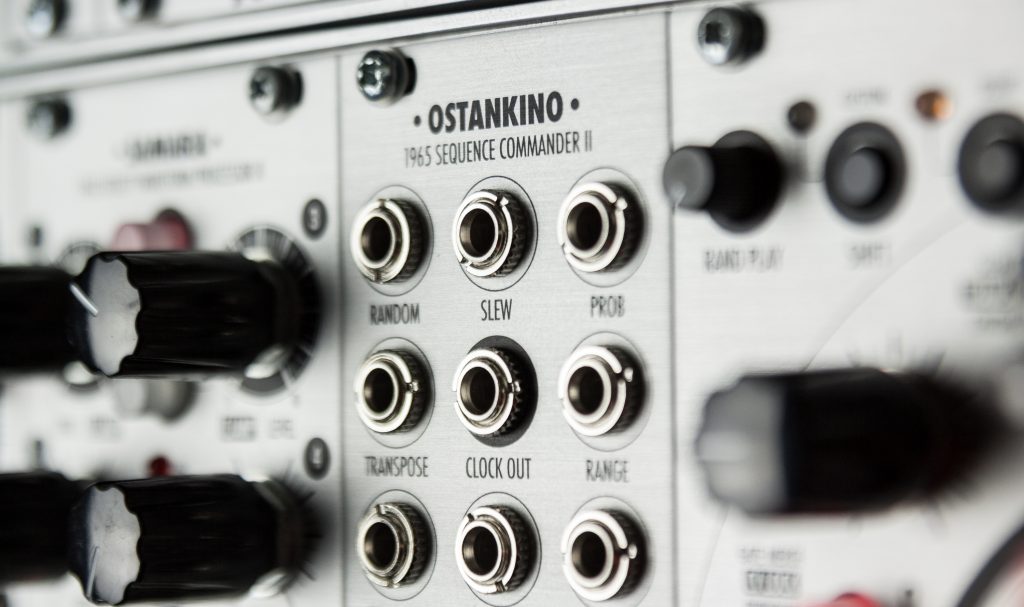
Moskwa II sounds very intriguing, and it seems that this module has been evolving for quite some time. We’ve seen so many Eurorack sequencers in the past few years; for you guys, what are some of the most exciting ways you’ve discovered to use Moskwa II to manipulate sequences?
Moskwa II itself is focused on immediate manual control. We’ve decided against using a screen as that could lead to some feature creep further down the line. Once you’ve got a screen and a push encoder, the world’s your oyster. That’s not our thing though. We much prefer the clean WYSIWYG interface and intuitive navigation. That is why we have opted for a few button combinations clearly labeled on the panel. There is no need to memorize any secret handshakes—it’s all labeled on the front panel. Moskwa II is a bit like Doctor Who’s TARDIS—it’s bigger on the inside, but you don’t need the sonic screwdriver to use it. We think we’ve done a good job of negotiating between the number of features and the ability to easily take full advantage of them.
We figured that to play a melody you only need a few notes at your disposal. Most western scales have only seven notes anyway. The main thing is the order of these notes and the rhythm. That is why we’ve implemented trigger patterns. They are micro trigger sequences played out when a given step is triggered in the main sequence. Each step of the main sequence can have its own unique pattern consisting of up to eight steps. A step pattern can play for the duration of the main step (in the division play mode), or it can have each of its steps last the same amount of time as the main sequence step (in the multiply play mode). The former is a form of ratcheting—it squeezes additional triggers into the length of the given main sequence step. The latter, on the other hand, lengthens the duration of the main sequence step, because each step pattern step lasts for the duration of one clock period. Patterns allow for much greater sequence variation than what one would expect from an eight-step sequencer, especially combined with the extensive randomization option of Moskwa II.
For CV control over parameters, you’d have to use a Moskwa II & Ostankino II combo. Ostankino II gives the user access to nearly all Moskwa II’s functions (with dedicated inputs to boot). It also adds a transposition input, a step repeat input and button, and the first step addressing via CV. Adding to Moskwa II’s CV and gate outputs, Ostankino II features individual gate outputs for each step, which can function as bit outputs for the Leibniz Subsystem as well. As can you see, the possibilities are endless.
Regarding Timiszoara, could you talk about some of the effects/functions you’ve managed to integrate into the device? What are some of your favorite algorithms you’ve developed for it?
During Timiszoara’s development, we had to work within the constraints of the Spin engine. To achieve interesting results, more often than not, we had to think outside the box. For instance, the hardware only allows for one second of delay, and to achieve stereo functionality one reduces it even further—down to half a second. Forget about long reverb and delay times. Of course, it applies to everyone working with that hardware, so we’re not complaining. We had to get our creative juices flowing because we didn’t want the module to become a jack of all trades, master of none. There have to be quite a few ordinary effects, as that is what the users expect from a multi-effects unit. But we’ve also created many unique algorithms that we’re very excited about. It’s a bit too early to talk about them though. We don’t want to ruin the surprise.
Besides the need for interesting effects, what we’ve strived for is a straightforward user interface. That is why, this time, we’ve decided to incorporate a screen that shows the parameter names and their values. It seems vital in a multi-effects module that the user doesn’t have to decipher the tiny writings on the panel, nor learn them by heart.
